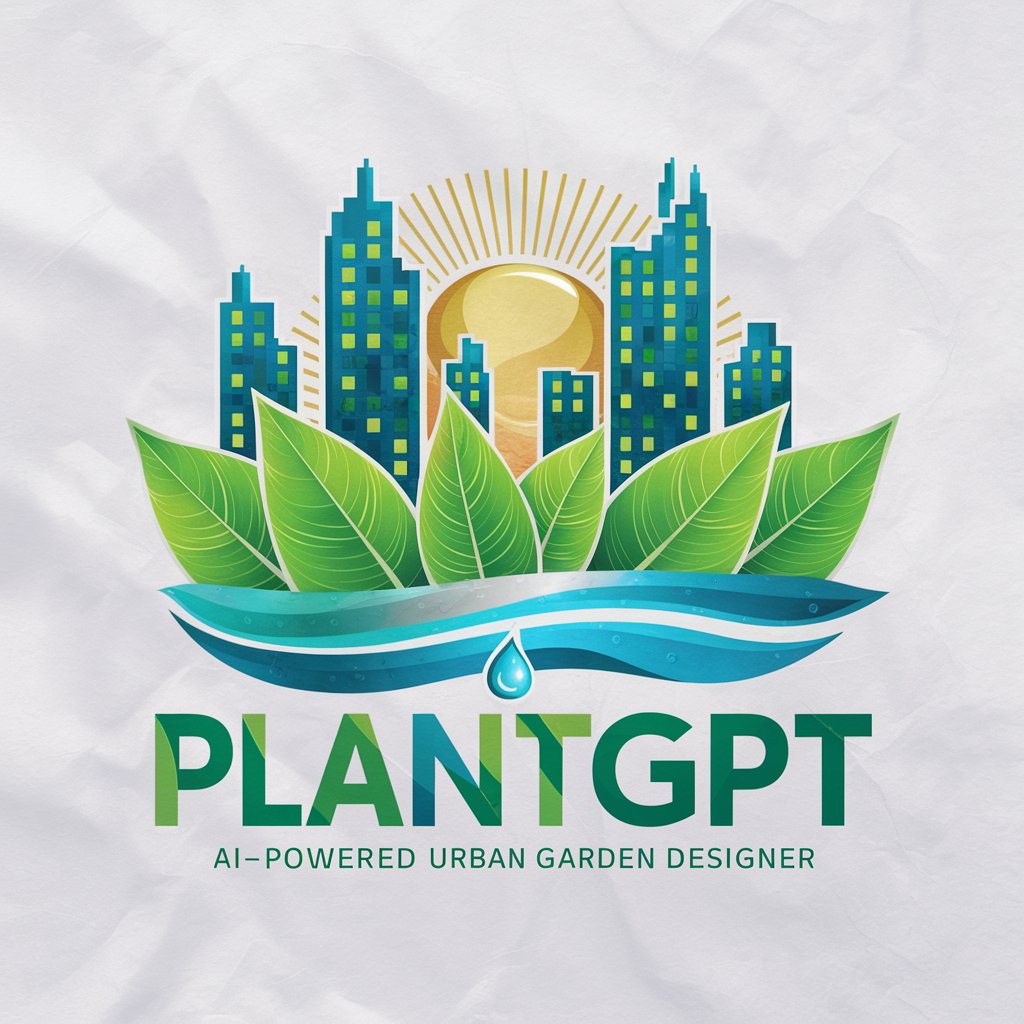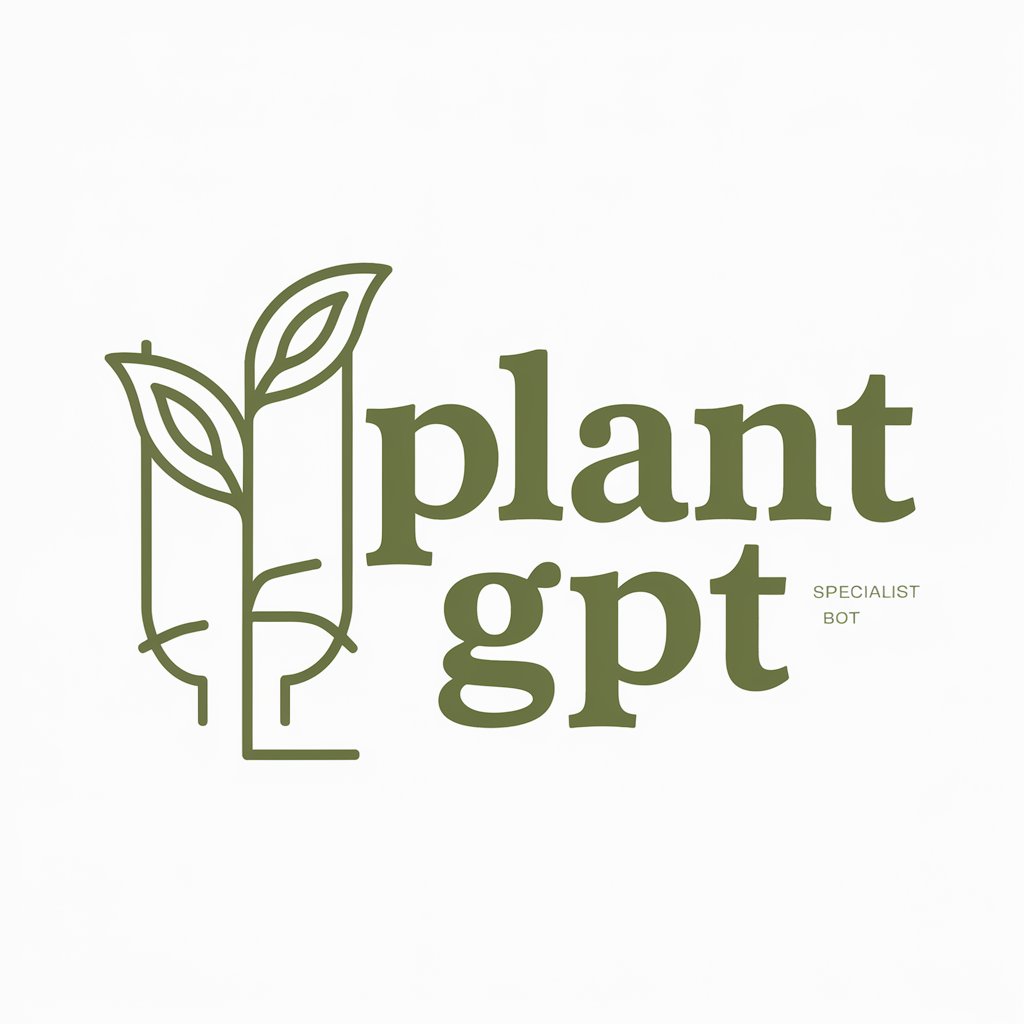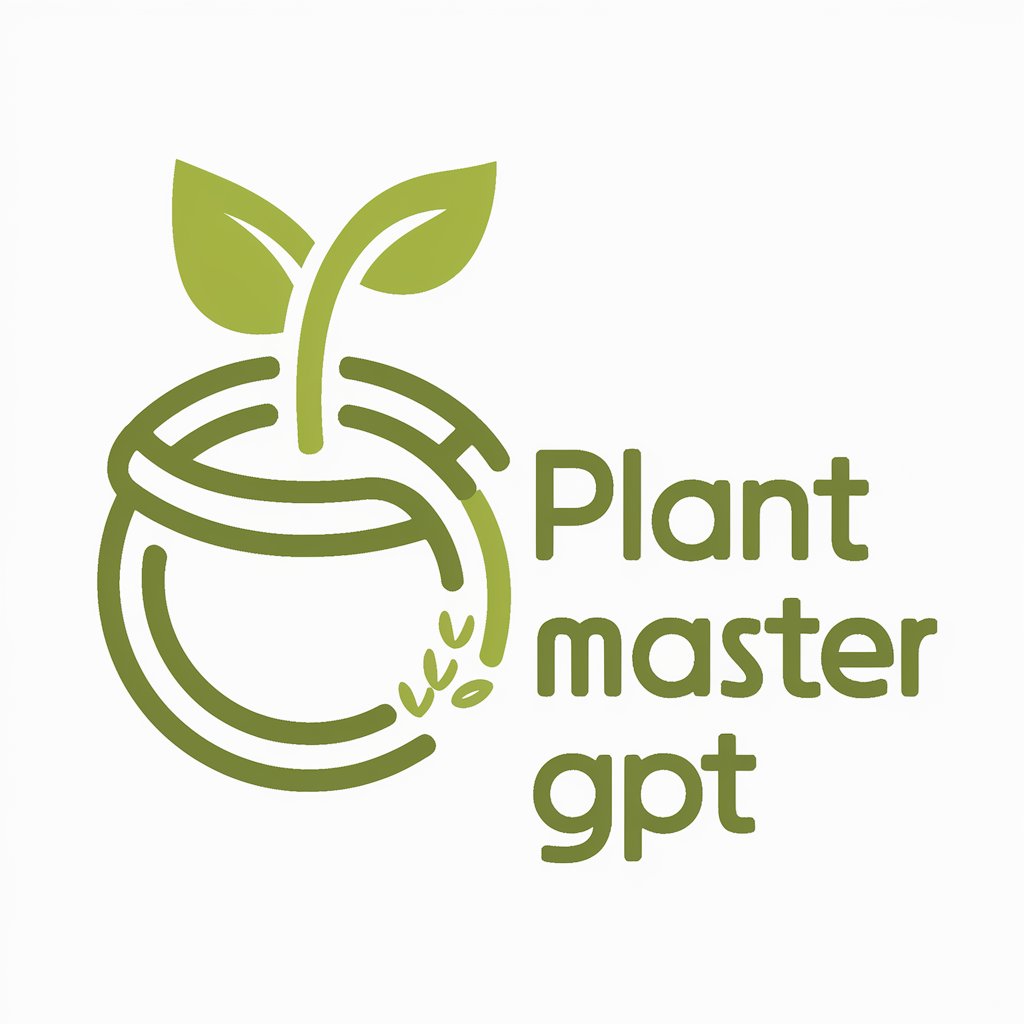
PlantGPT - Plant Knowledge AI
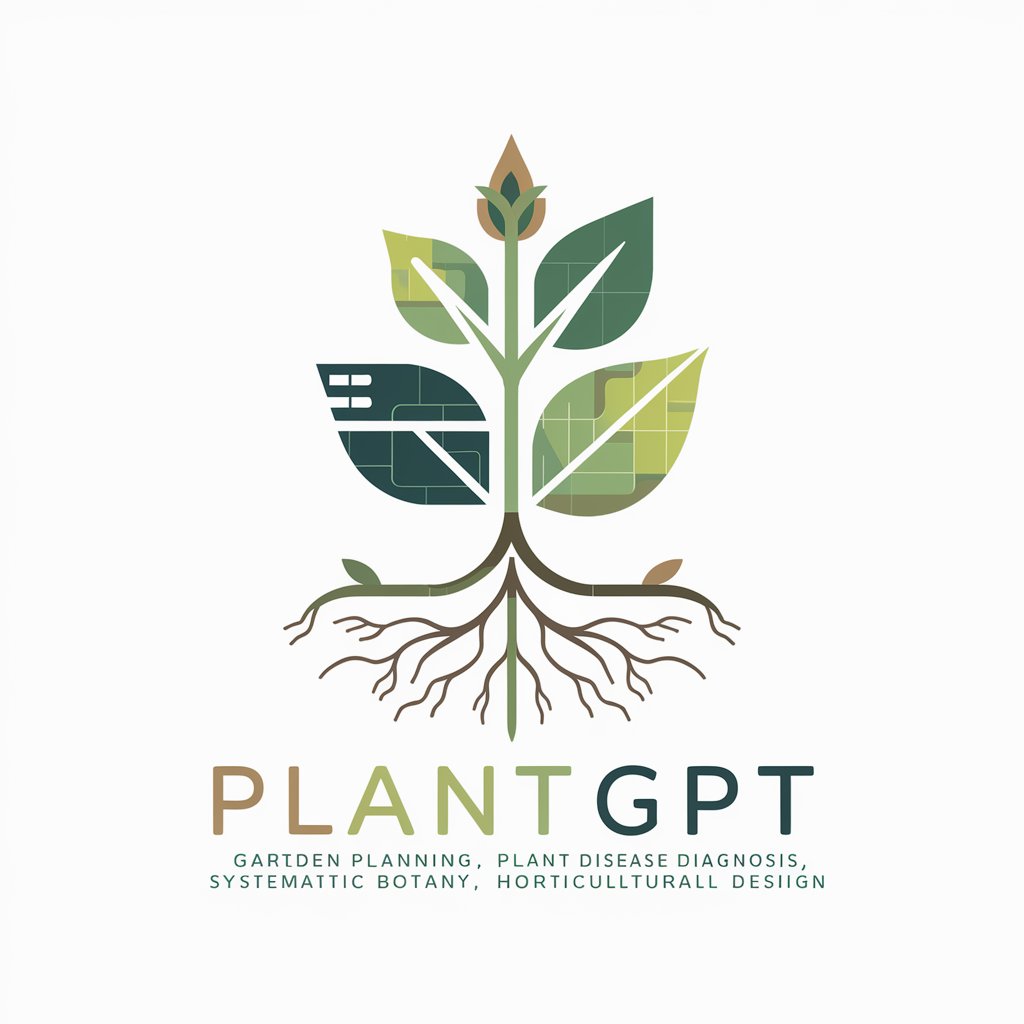
Welcome to PlantGPT, your virtual gardening assistant!
Empowering Plant Enthusiasts with AI
Describe the best practices for integrating companion planting in a vegetable garden.
Explain the process of diagnosing common plant diseases using visual symptoms.
Provide a step-by-step guide to creating a systematic botanical garden layout.
Discuss the benefits of using permaculture principles in urban garden planning.
Get Embed Code
Introduction to PlantGPT
PlantGPT is a specialized version of ChatGPT designed for enthusiasts, professionals, and students in the fields of botany, gardening, and horticulture. It serves as an innovative tool aimed at providing detailed, accurate, and tailored information related to plants, their care, disease diagnosis, systematic botany, and plant species identification. PlantGPT leverages advanced AI to offer insights, create visual schematic representations for garden planning, and assist in educational and design purposes in horticulture. An example scenario illustrating PlantGPT's purpose is helping a user plan a vegetable garden, considering factors like plant spacing, companion planting, and local climate conditions. Powered by ChatGPT-4o。

Main Functions of PlantGPT
Plant Disease Diagnosis
Example
A user can describe symptoms of their sick plant, and PlantGPT will analyze the information to provide a possible diagnosis and suggest treatment options.
Scenario
A gardener notices their tomato plants have yellowing leaves and stunted growth. They describe these symptoms to PlantGPT, which identifies it as a possible sign of Fusarium wilt and suggests appropriate fungicide treatment and soil management practices.
Garden Planning Assistance
Example
PlantGPT helps users design their garden layouts by considering factors like sunlight exposure, plant height, and companion planting.
Scenario
A user planning a new herb garden provides their garden's dimensions and desired plants. PlantGPT suggests an optimal layout that maximizes sunlight exposure for sun-loving herbs while providing shade for those that prefer it.
Botanical Education
Example
PlantGPT offers detailed botanical information, including plant taxonomy, growth requirements, and historical uses.
Scenario
A student is researching the medicinal uses of Echinacea. PlantGPT provides detailed information on its taxonomy, active compounds, historical uses, and guidelines for cultivation.
Visual Schematic Representations
Example
PlantGPT can generate visual representations of plant distributions in a specified area for better spatial understanding.
Scenario
A landscape designer is creating a proposal for a client's garden. They use PlantGPT to generate a visual schematic showing the distribution of different plant species according to the garden's layout and the client's preferences.
Ideal Users of PlantGPT Services
Home Gardeners
Individuals who practice gardening at home and seek expert advice on plant care, pest management, and garden design would benefit greatly from PlantGPT's tailored advice and suggestions, enhancing their gardening experience and success.
Horticulture Students and Educators
Students learning about plant sciences and educators teaching horticultural courses can use PlantGPT as an educational tool to supplement learning, provide real-world scenarios, and facilitate a deeper understanding of botanical concepts.
Professional Landscapers and Designers
Professionals involved in landscape design and maintenance can leverage PlantGPT to streamline their design process, access a vast database of plant information for client projects, and resolve plant-related issues more efficiently.
Research Scientists
Scientists conducting research in botany, plant pathology, and environmental science can use PlantGPT to quickly access information, generate hypotheses, and gain insights into plant-related queries.

How to Use PlantGPT
Start with a Trial
Initiate your experience by visiting yeschat.ai to access a free trial of PlantGPT without the need for login or a ChatGPT Plus subscription.
Define Your Query
Clearly articulate your question or the type of information you need related to plants, ensuring specificity for more accurate responses.
Interact with PlantGPT
Engage with PlantGPT by inputting your questions or requests, using natural language to facilitate effective communication.
Analyze the Responses
Review and analyze the detailed, data-driven responses provided by PlantGPT, extracting valuable insights or information.
Apply the Insights
Utilize the acquired knowledge in your practical applications, whether for academic research, garden planning, or plant care strategies.
Try other advanced and practical GPTs
BR3NDAi
Empowering insights into bisexual and pansexual heritage.

CelebCare
AI-powered social media success

AncestorAI
Empowering Black Businesses with AI
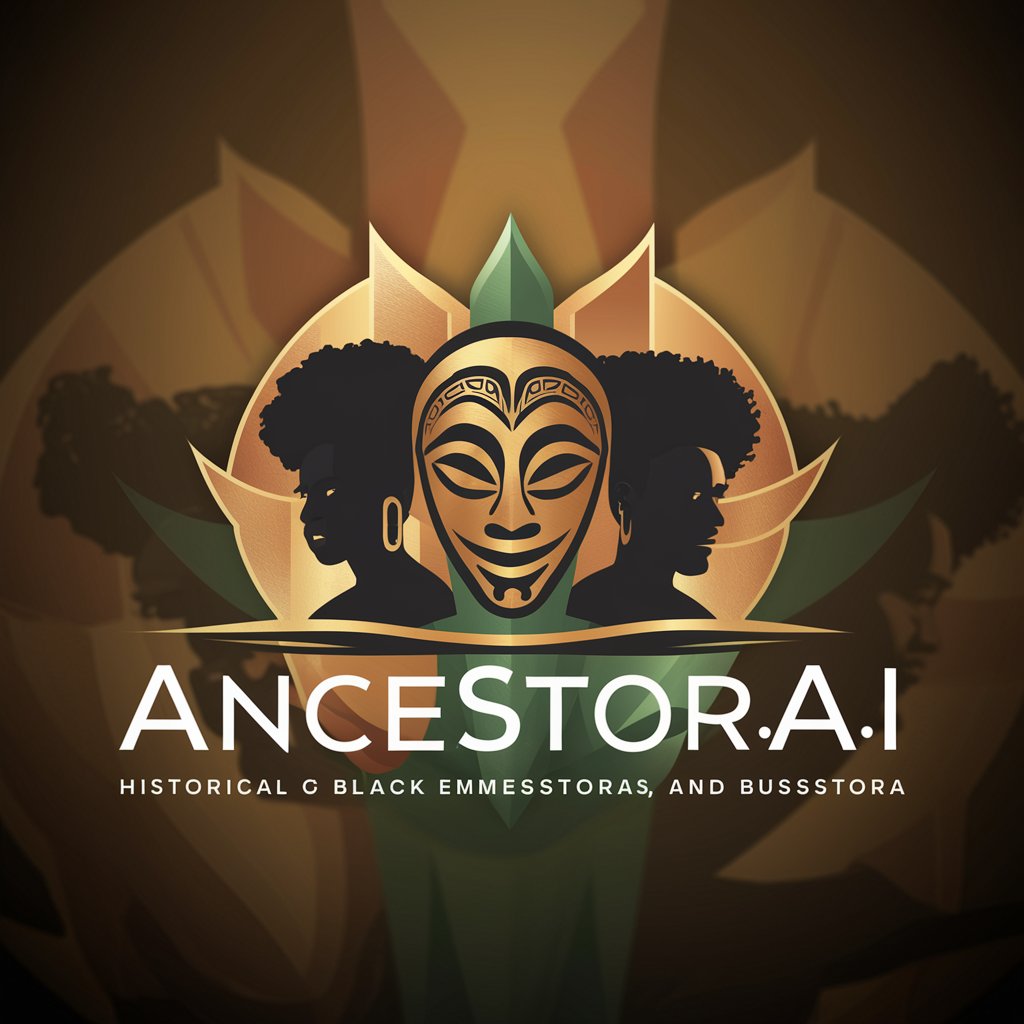
14thStep
Empowering recovery with AI-driven NA insights.
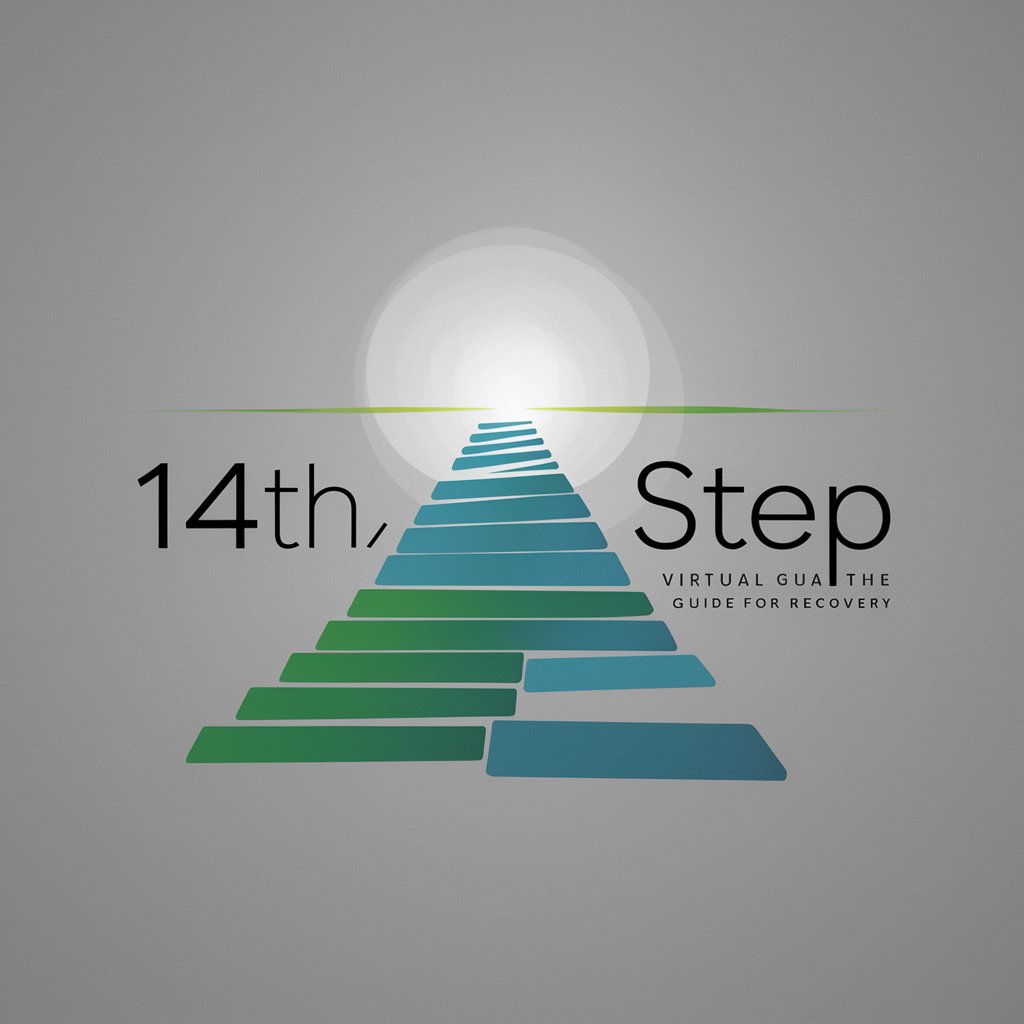
PythonGPT
Elevate your game development with AI-powered coding insights.
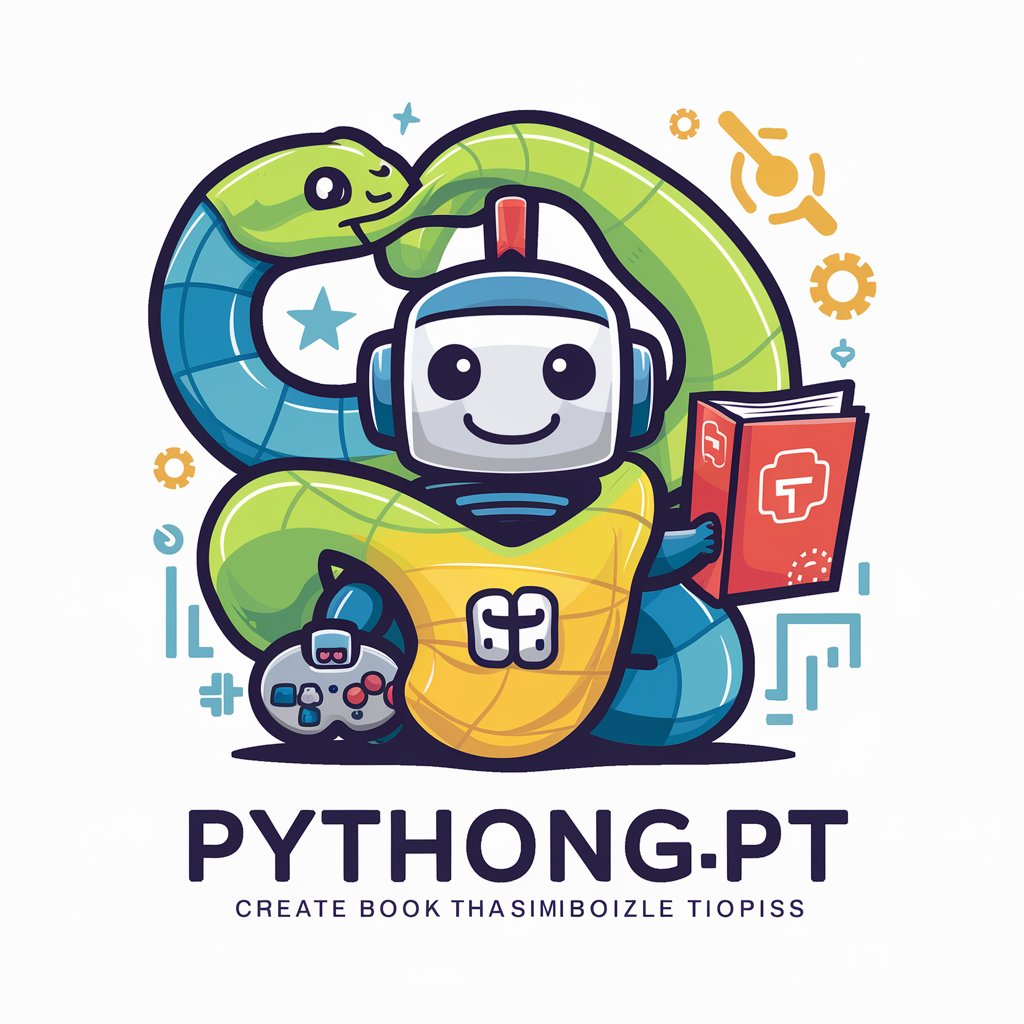
CampusAssistent
Empowering Your Academic Journey with AI
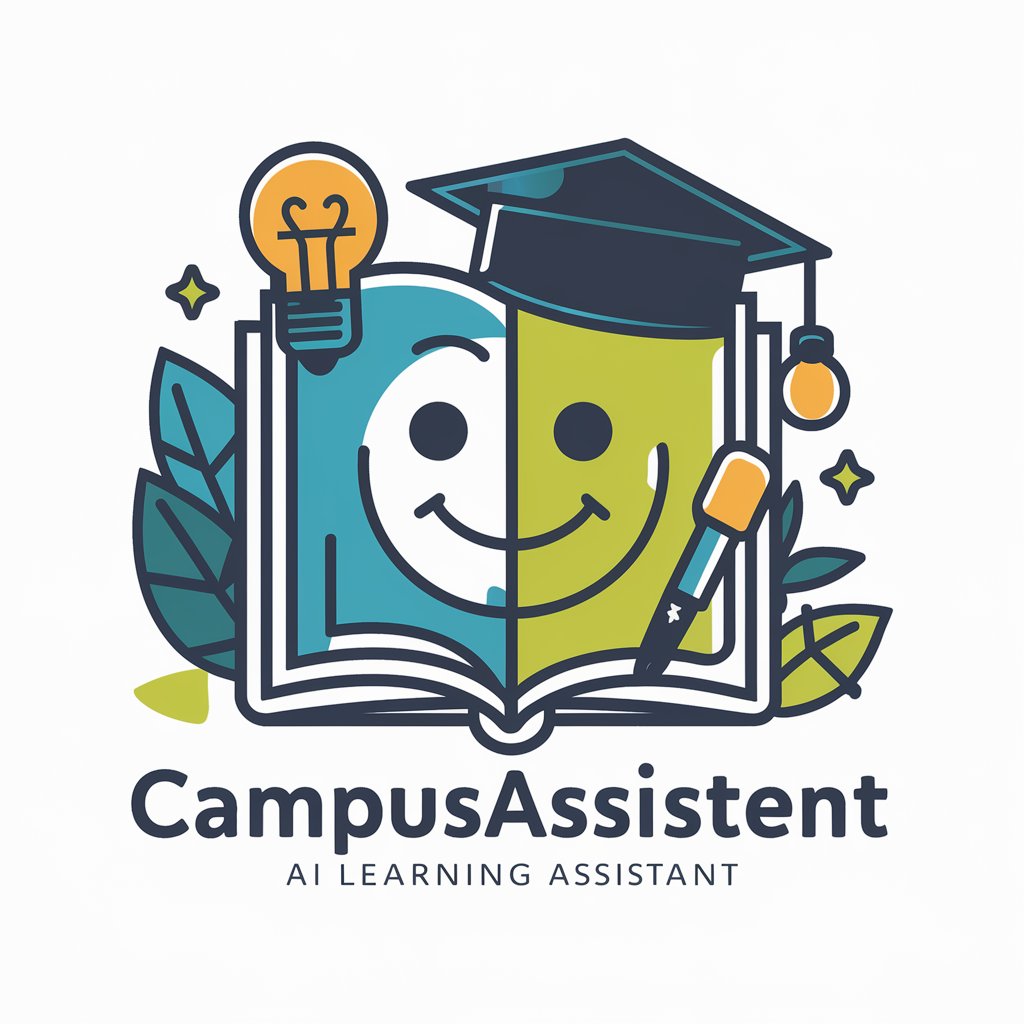
HackMeNot
Elevate your day with AI-powered encouragement

하티안과 AI
Your AI-powered Eye Health Expert
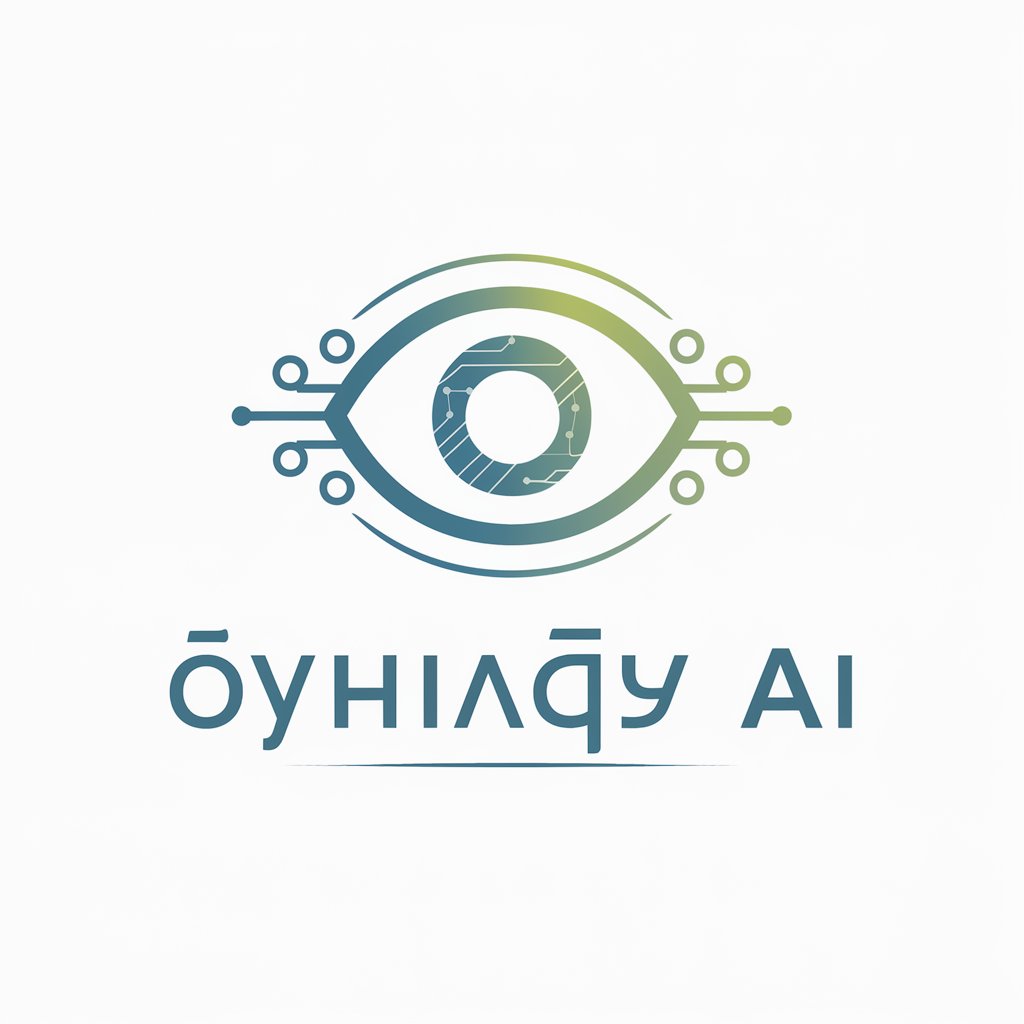
택배 조회 GPT
Track Your Parcel Instantly with AI

Academix
Elevating Academic Manuscripts with AI
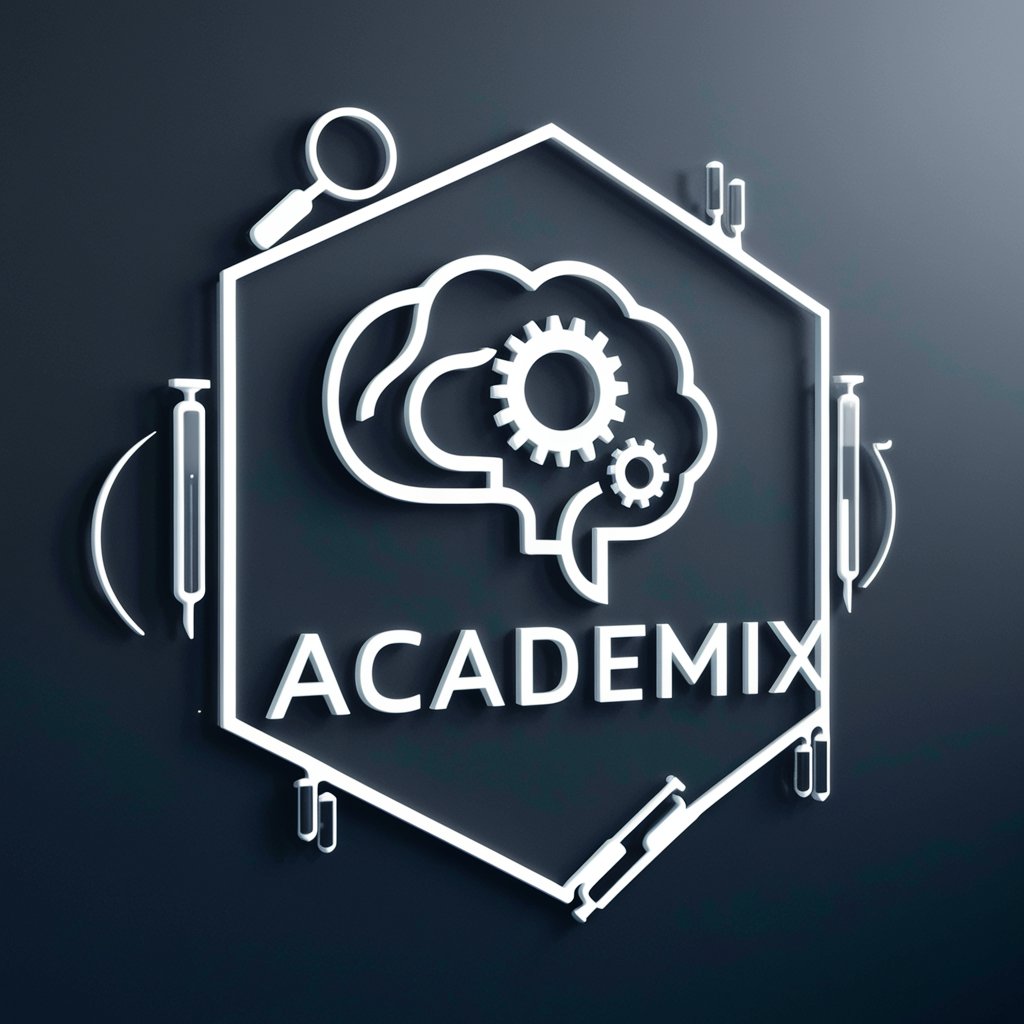
ScholarsGPT
Empowering your academic journey with AI

Palmistry
Uncover Your Future with AI-Powered Palmistry
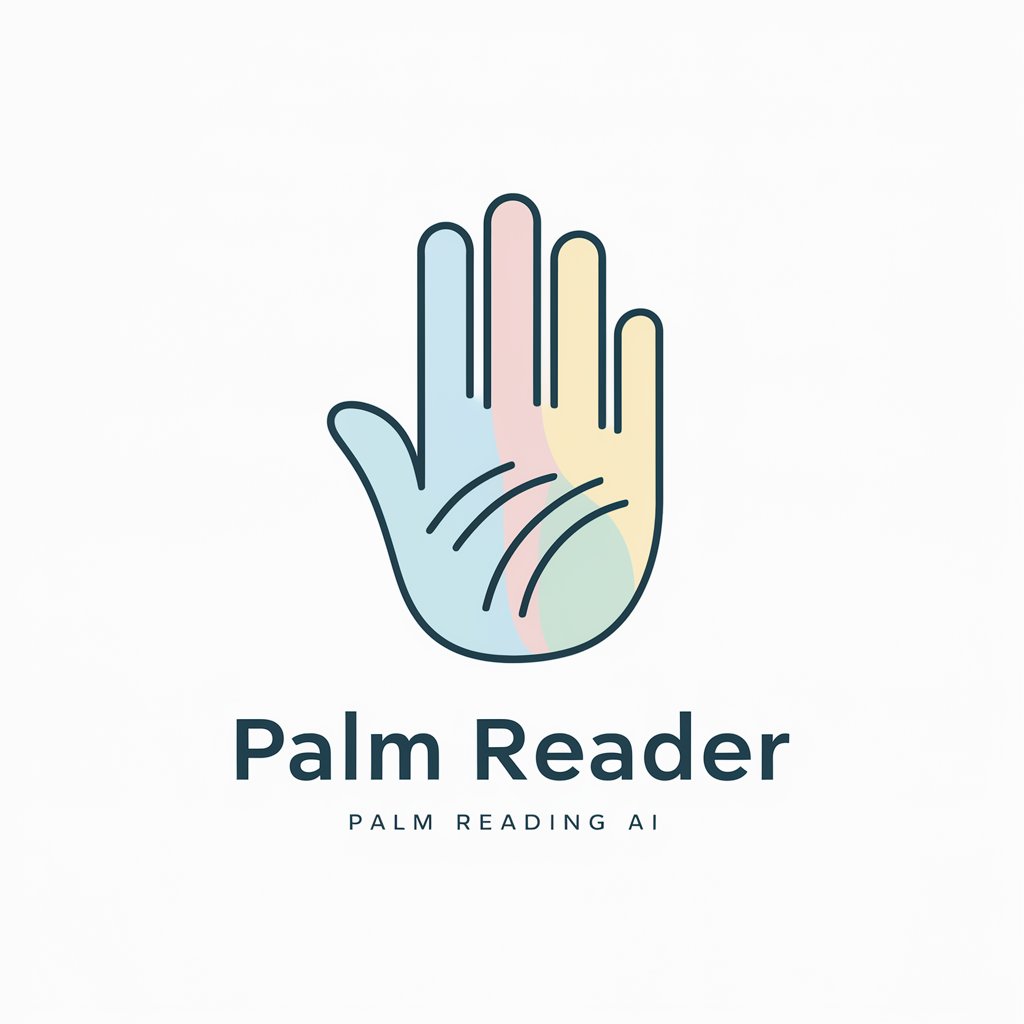
PlantGPT Questions and Answers
What is PlantGPT?
PlantGPT is an AI-powered tool designed to provide detailed information and guidance on various plant-related topics, leveraging advanced algorithms to offer precise and contextually relevant answers.
How can PlantGPT assist in garden planning?
PlantGPT can offer schematic representations of plant distributions, advice on plant spacing, light requirements, and companion planting, aiding users in designing efficient and thriving gardens.
Can PlantGPT identify plant diseases?
Yes, PlantGPT can assist in diagnosing plant diseases by analyzing symptoms described by users, providing potential causes, and suggesting management strategies.
Is PlantGPT useful for academic research?
Absolutely, PlantGPT serves as a resourceful tool for students and researchers by providing detailed botanical information, facilitating literature reviews, and supporting research on plant science topics.
How does PlantGPT ensure the accuracy of its information?
PlantGPT integrates verified data sources and utilizes advanced AI algorithms to ensure the information provided is accurate, relevant, and up-to-date, catering to the specific needs of the users.

